Acer Windows Mixed Reality HMD Review
Why you can trust Tom's Hardware
The Acer Windows Mixed Reality Headset
Acer's WMR Headset and its controllers come packed in a pair of blue boxes. The headset is wrapped in plastic, and then stuffed between foam padding on either side to keep it snug during shipping. You also receive an owner's guide and a voucher for a free copy of GhostBusters VR.
The headset sticks out from most consumer electronic devices because of its vibrant blue color, which seemed odd at first, but grew on us over time.
Specifications
Up front, you'll find two black-and-white cameras, along with an infrared sensor, both derived from the Microsoft HoloLens headset. The cameras enable inside-out spatial tracking, while the infrared sensor tracks the wand controllers. Those tracking cameras do not facilitate pass-through vision (a live video feed, basically), meaning you can’t use the headset for AR experiences.
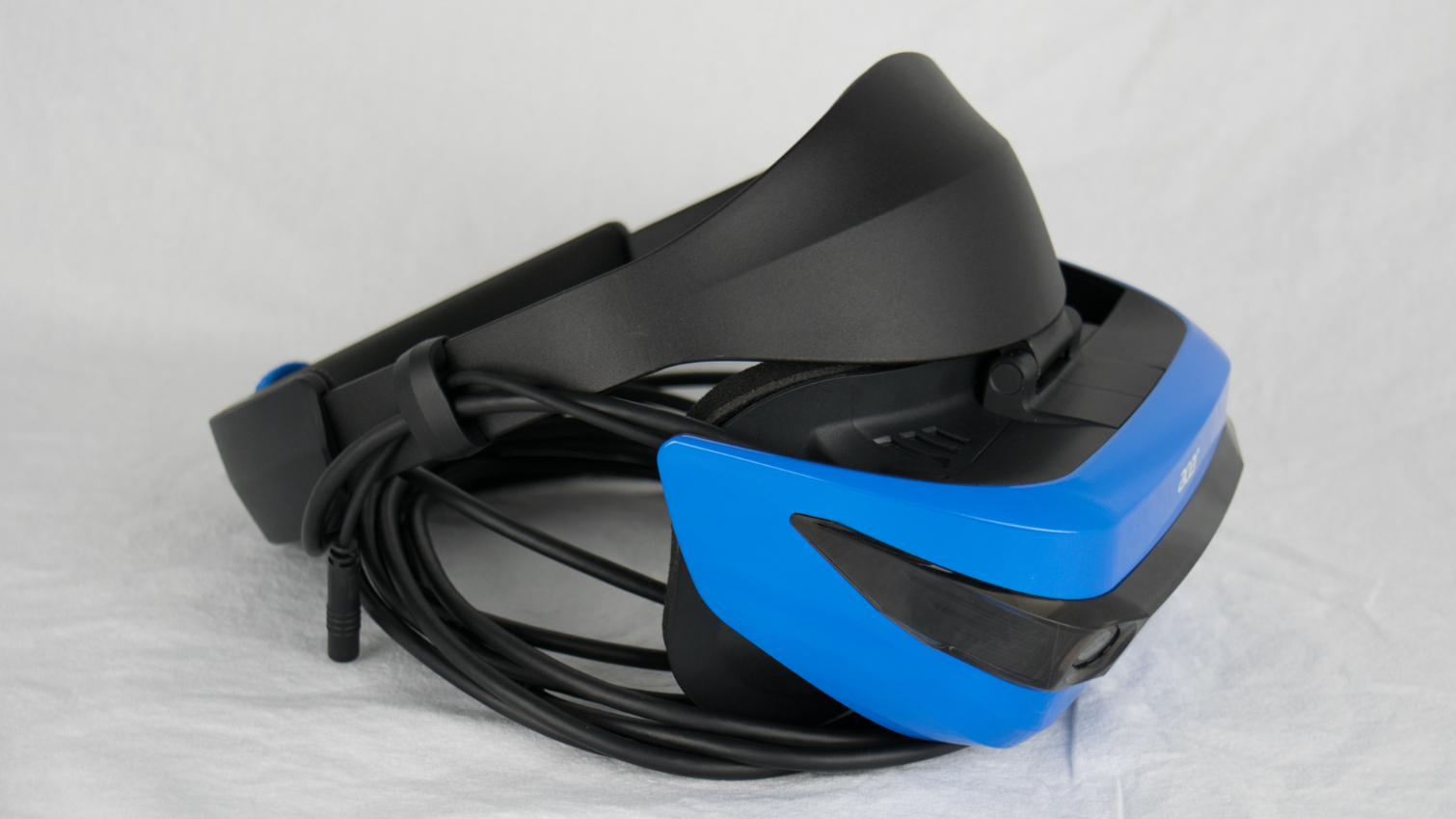
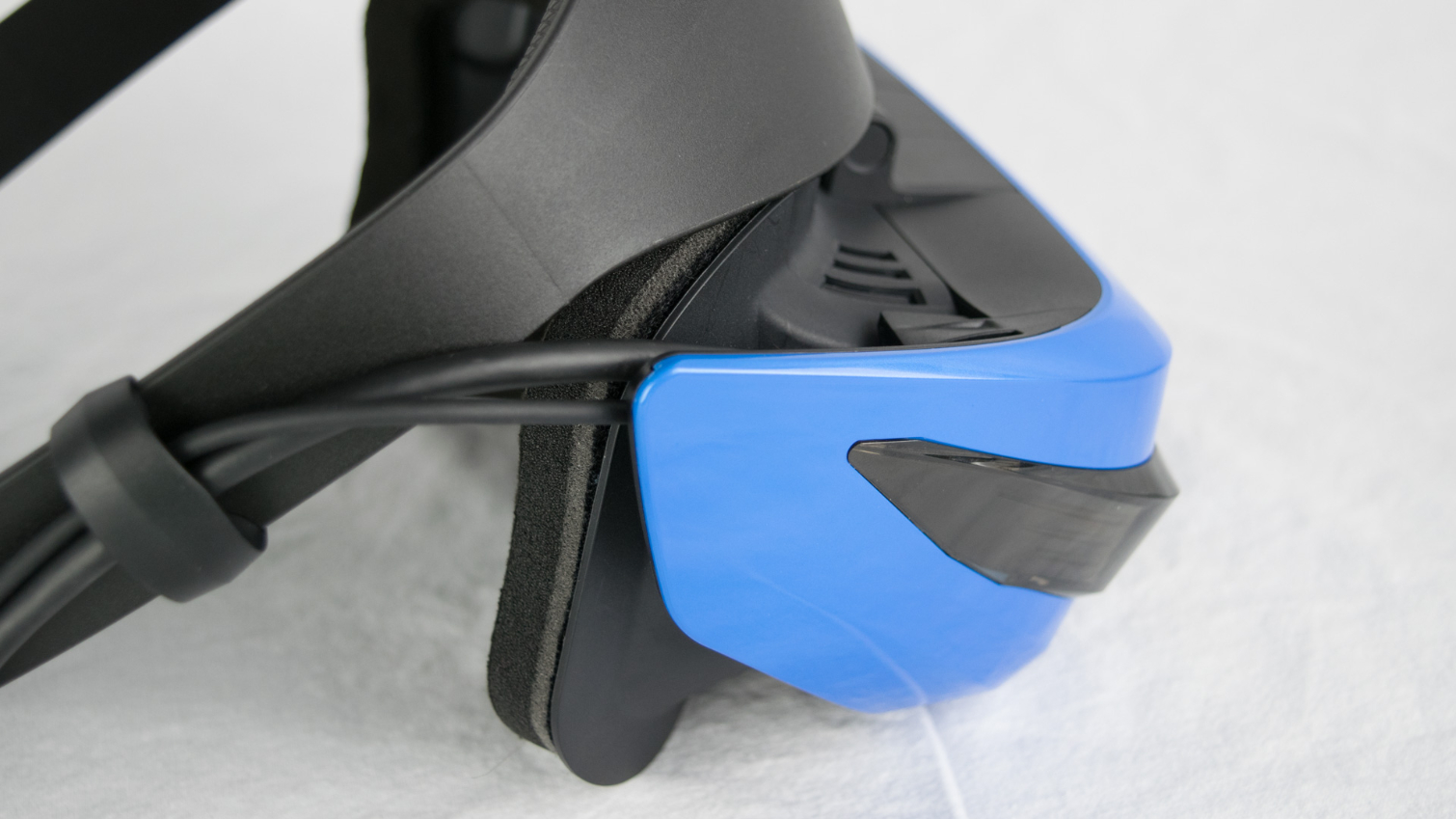
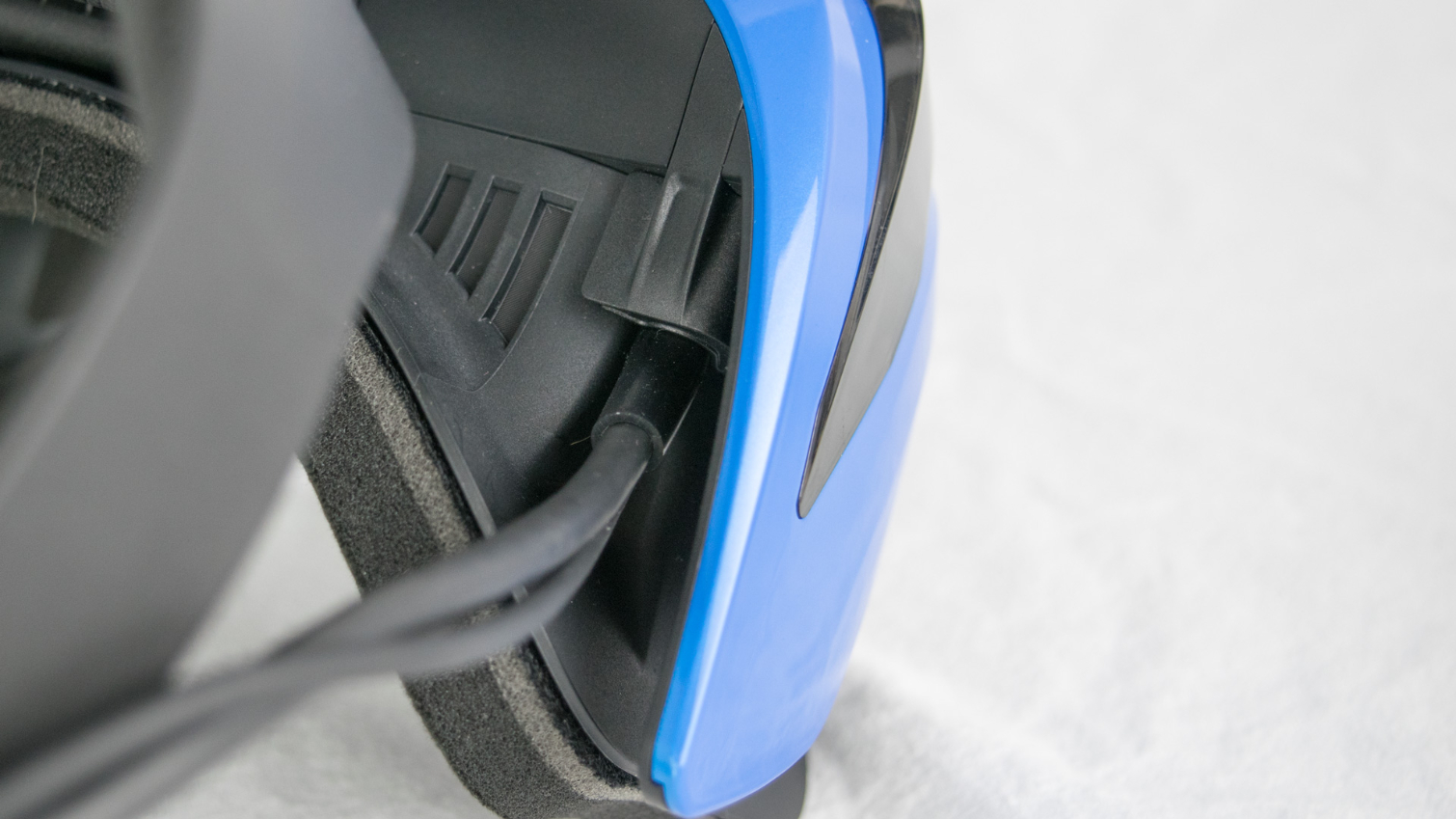
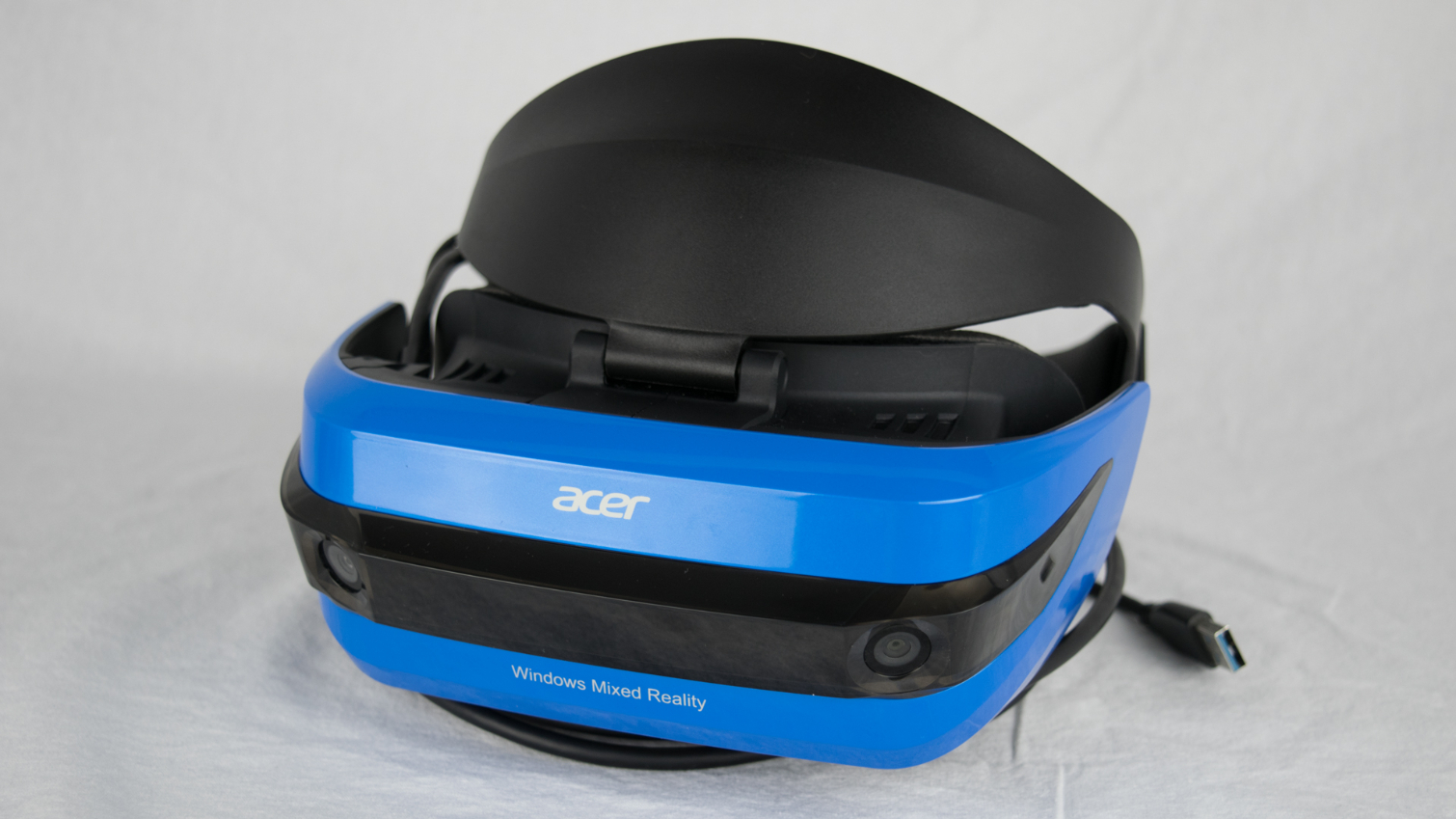


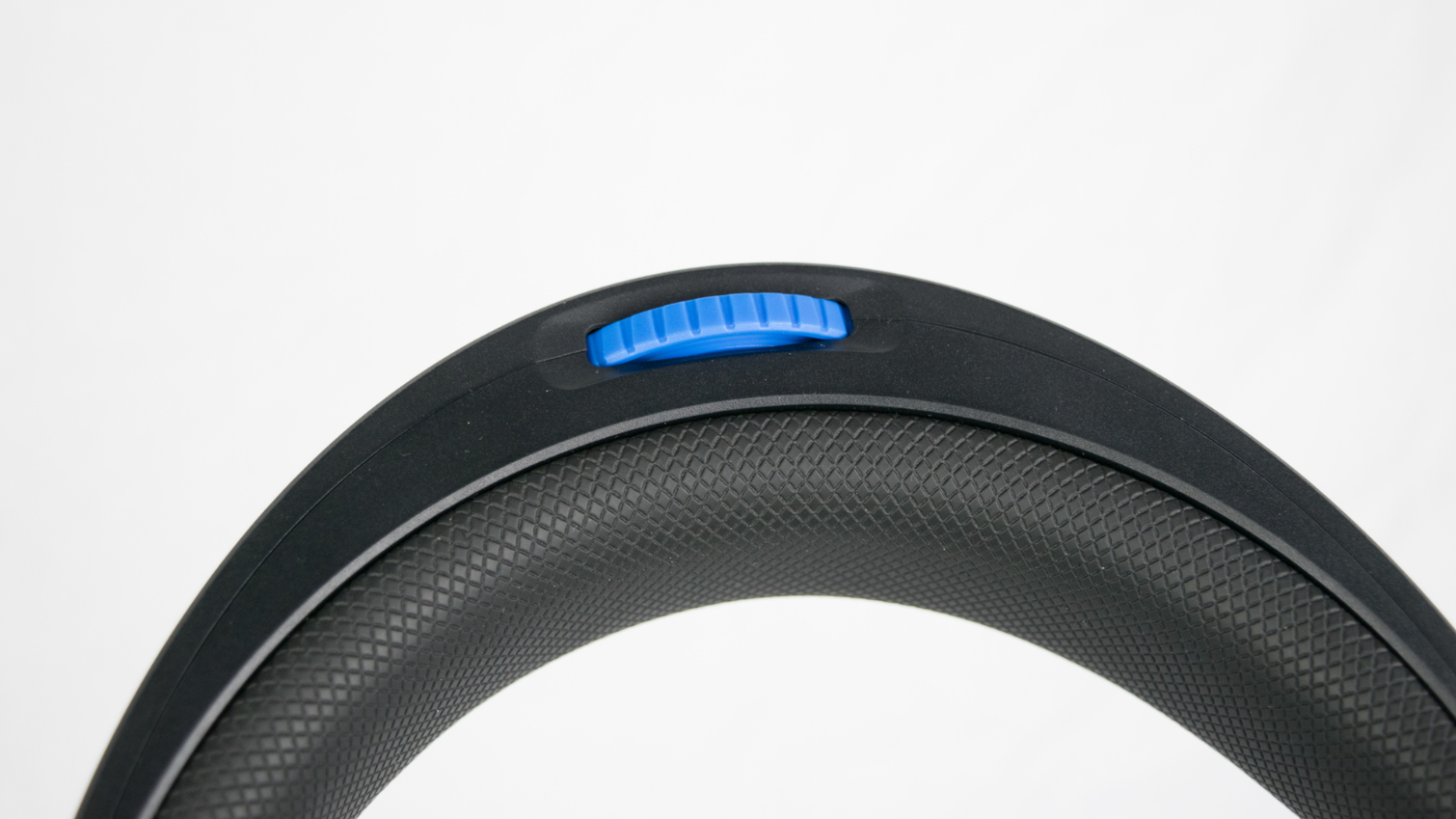

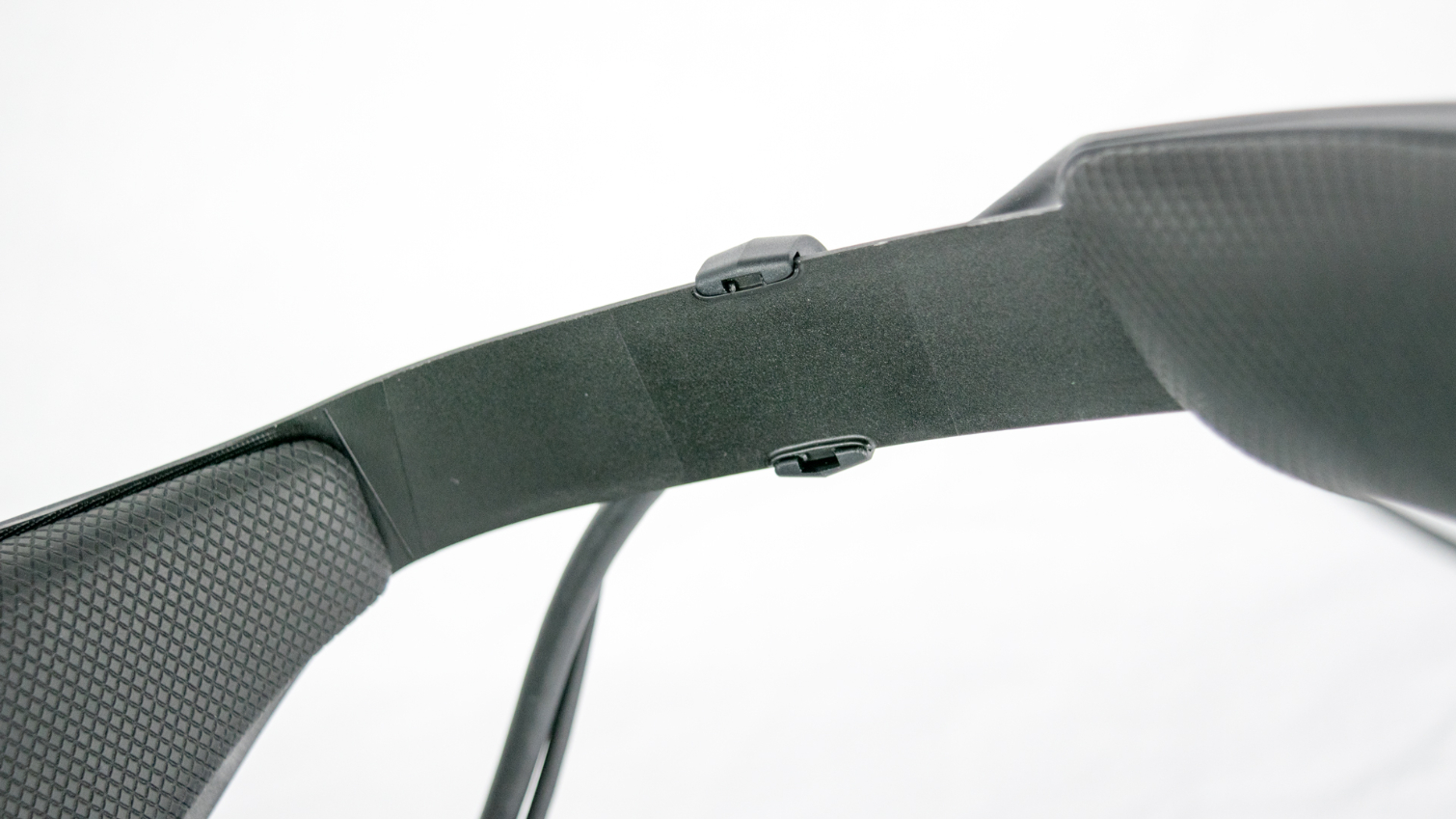

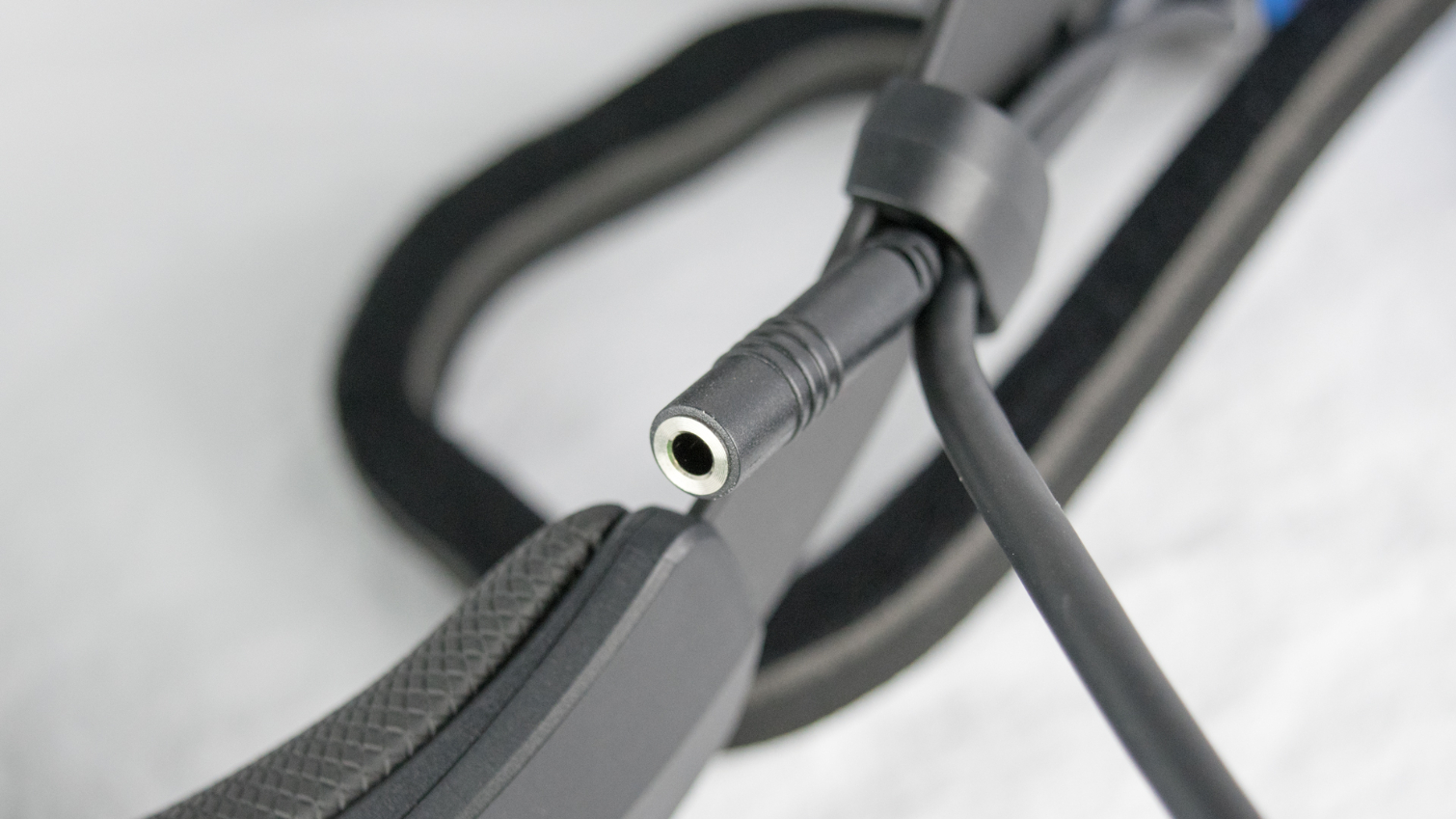
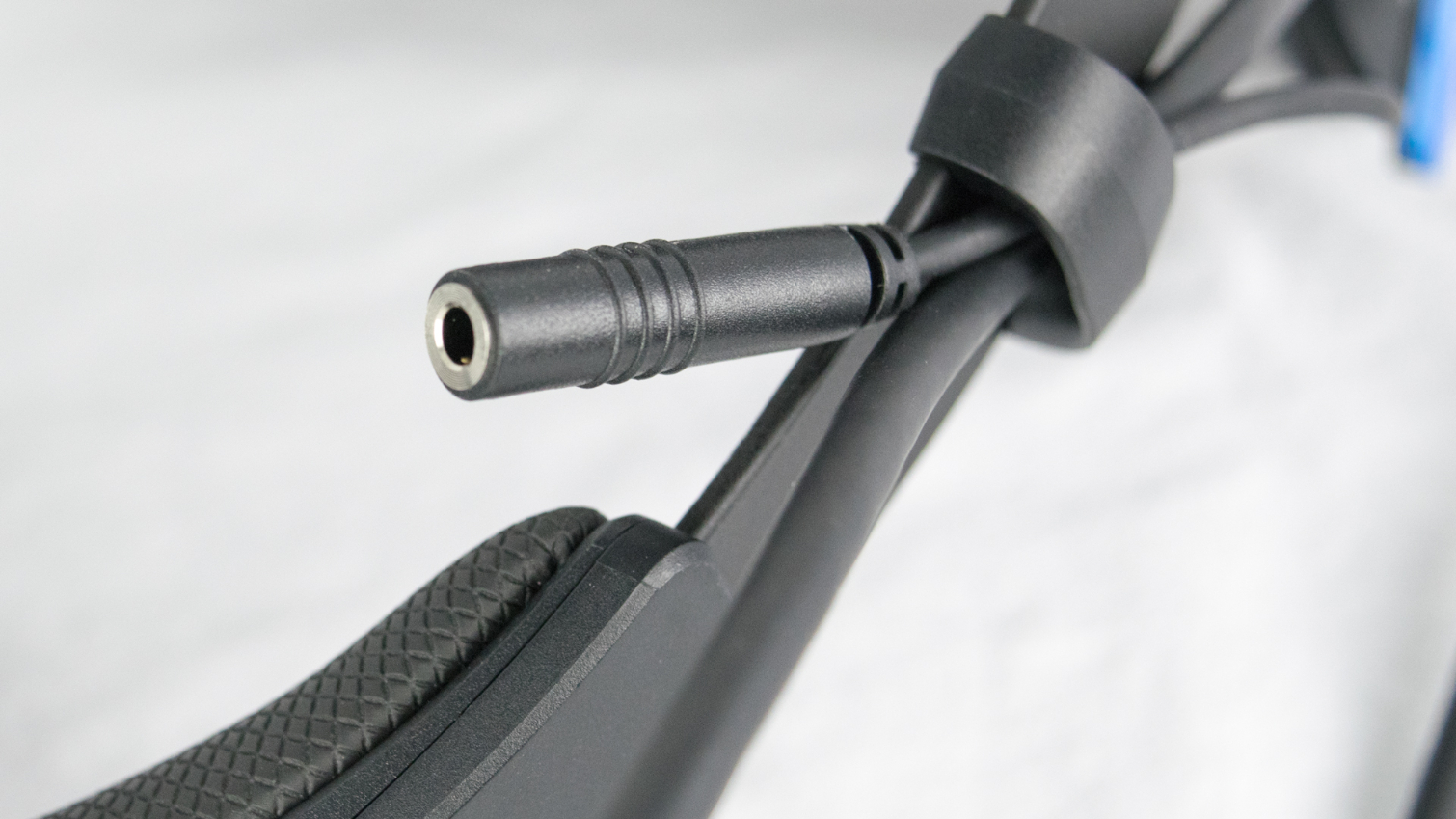

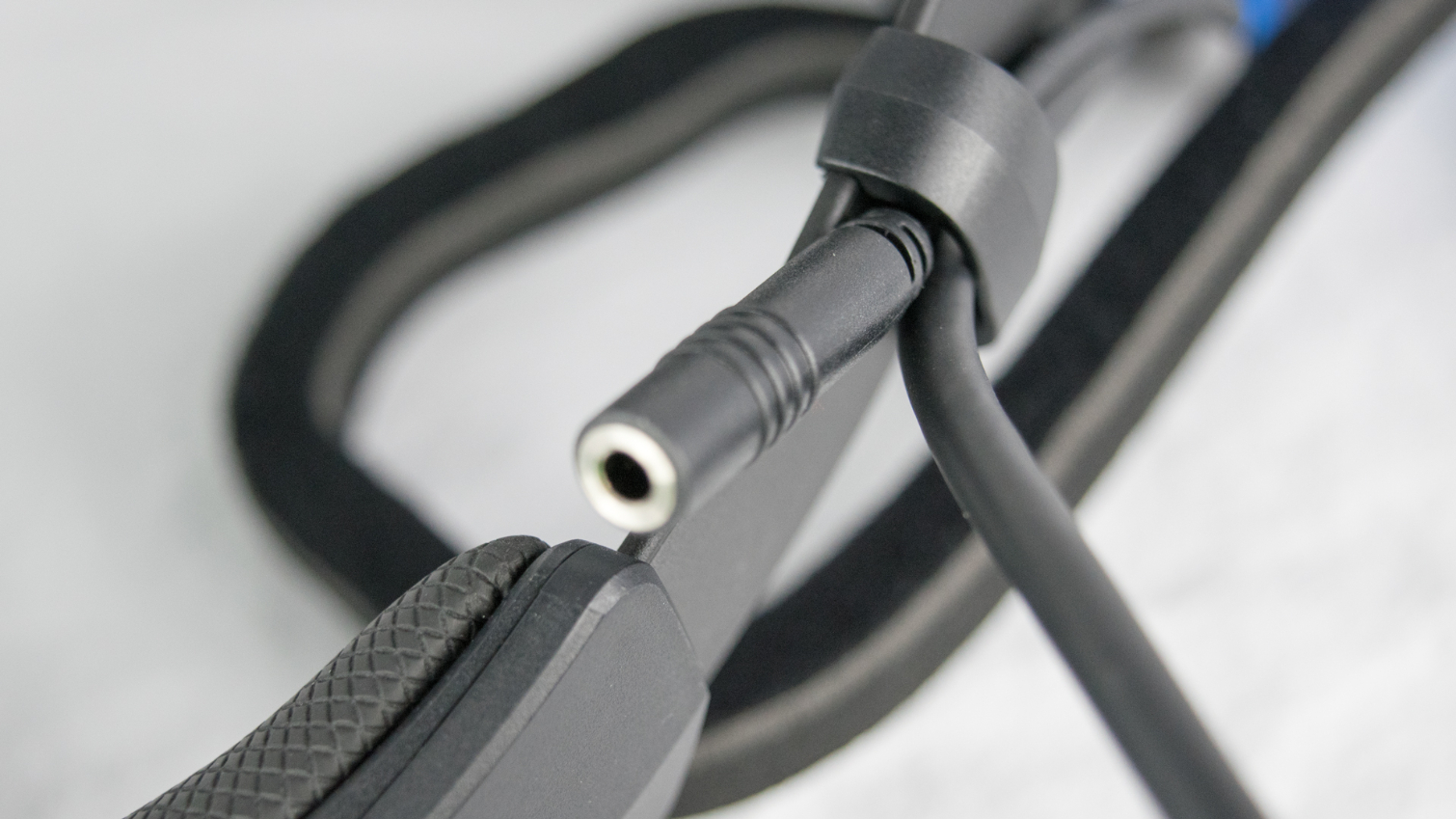
Acer's design employs a mechanical head strap system like the one found on Sony’s PlayStation VR. This strap has a moisture-proof padded section for your forehead, and another one for the back of your head. On the strap's back side, you’ll find a blue dial that lets you adjust for different head sizes.
Unlike the PlayStation VR, Acer’s head strap mechanism doesn’t include a release button. We consider this to be a serious oversight. The dial locks in place with a click when you tighten it, and if you turn it too far, force is the only way to unlock the mechanism. We predict this will be a premature wear point that could cause problems down the road.
Fortunately, you don’t need to remove the headset as often as you would with a Rift or Vive. Those devices prevent you from interacting with the real world altogether. But with Acer's WMR HMD, you simply flip the visor up.
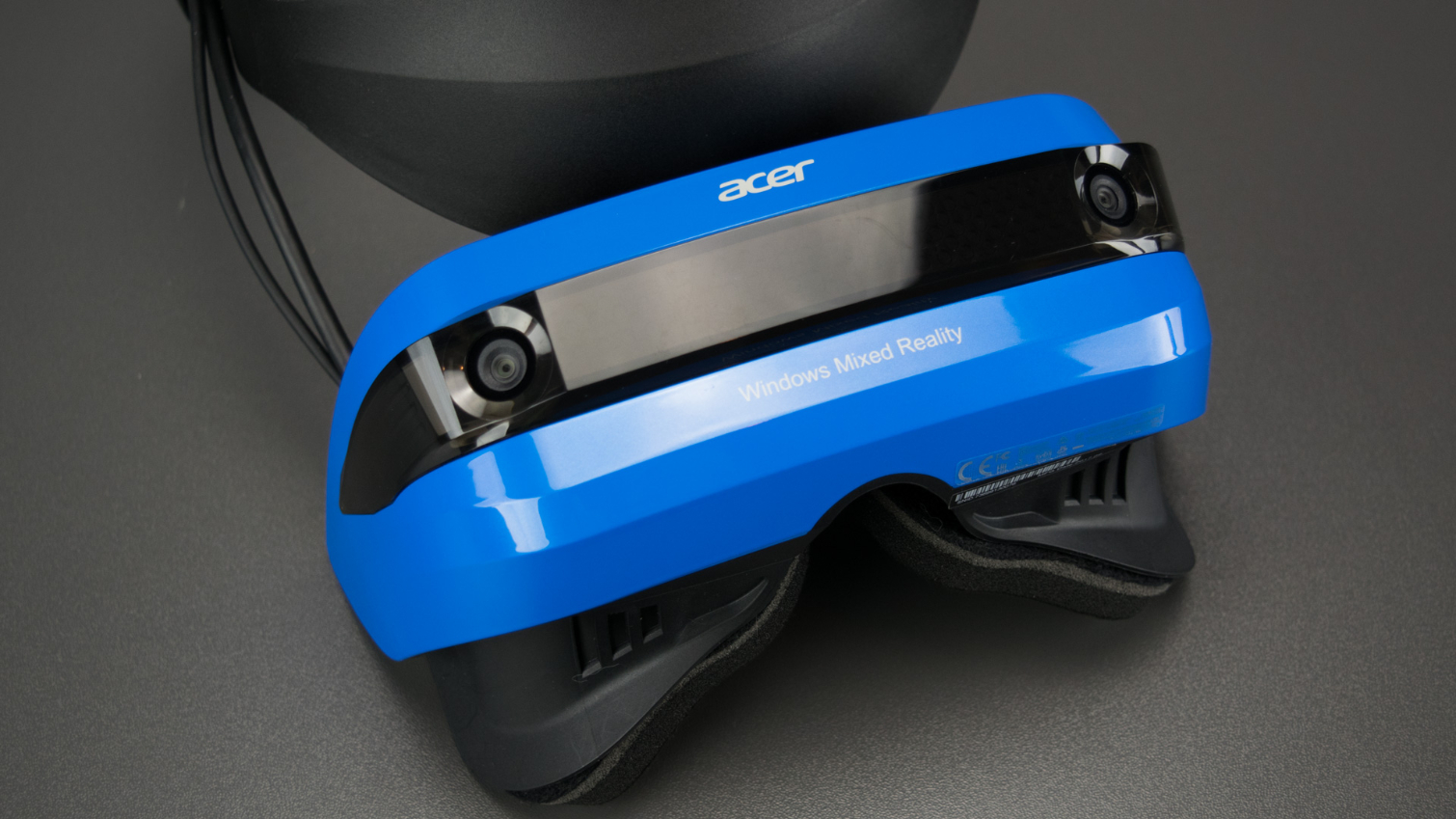


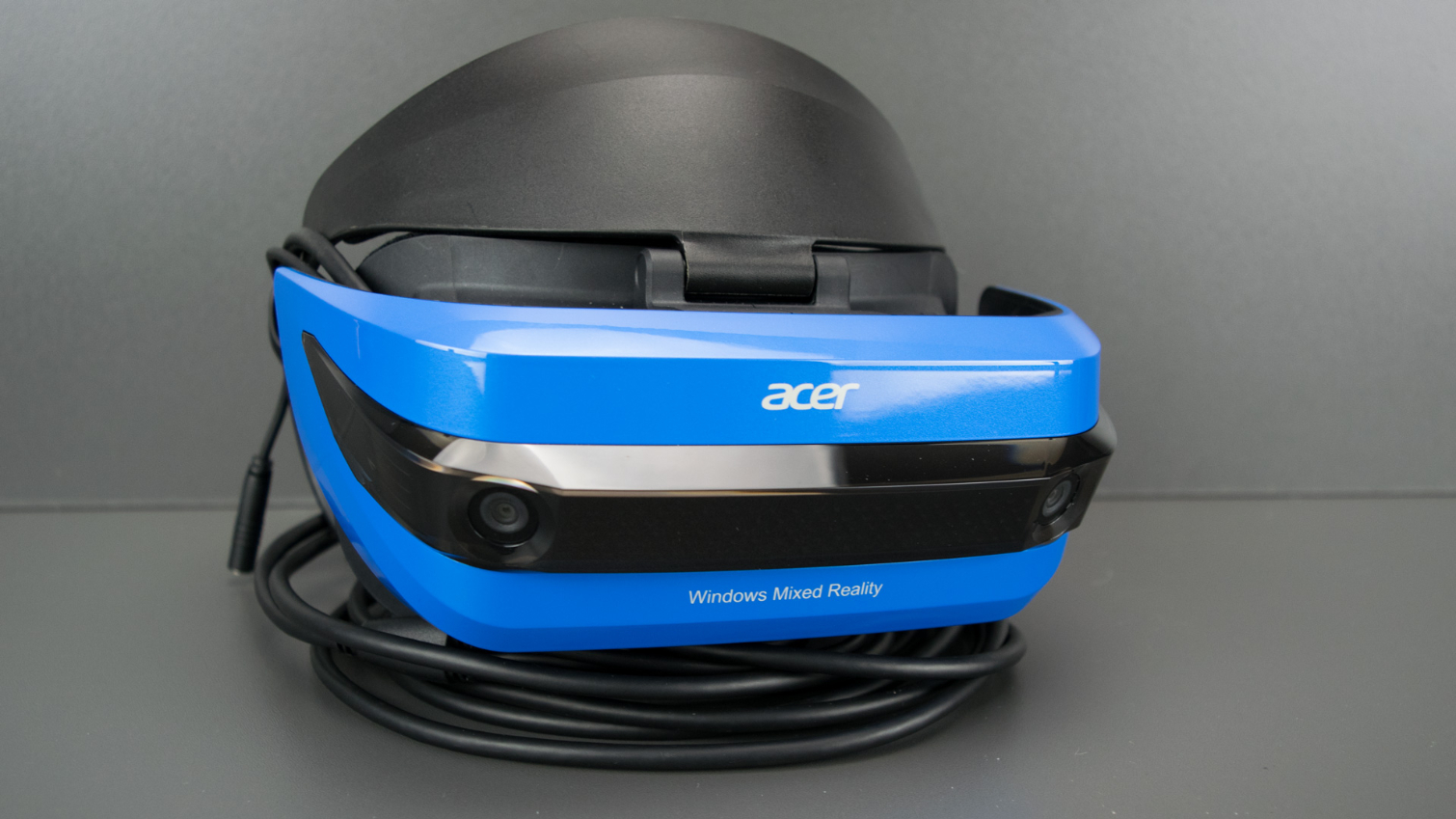
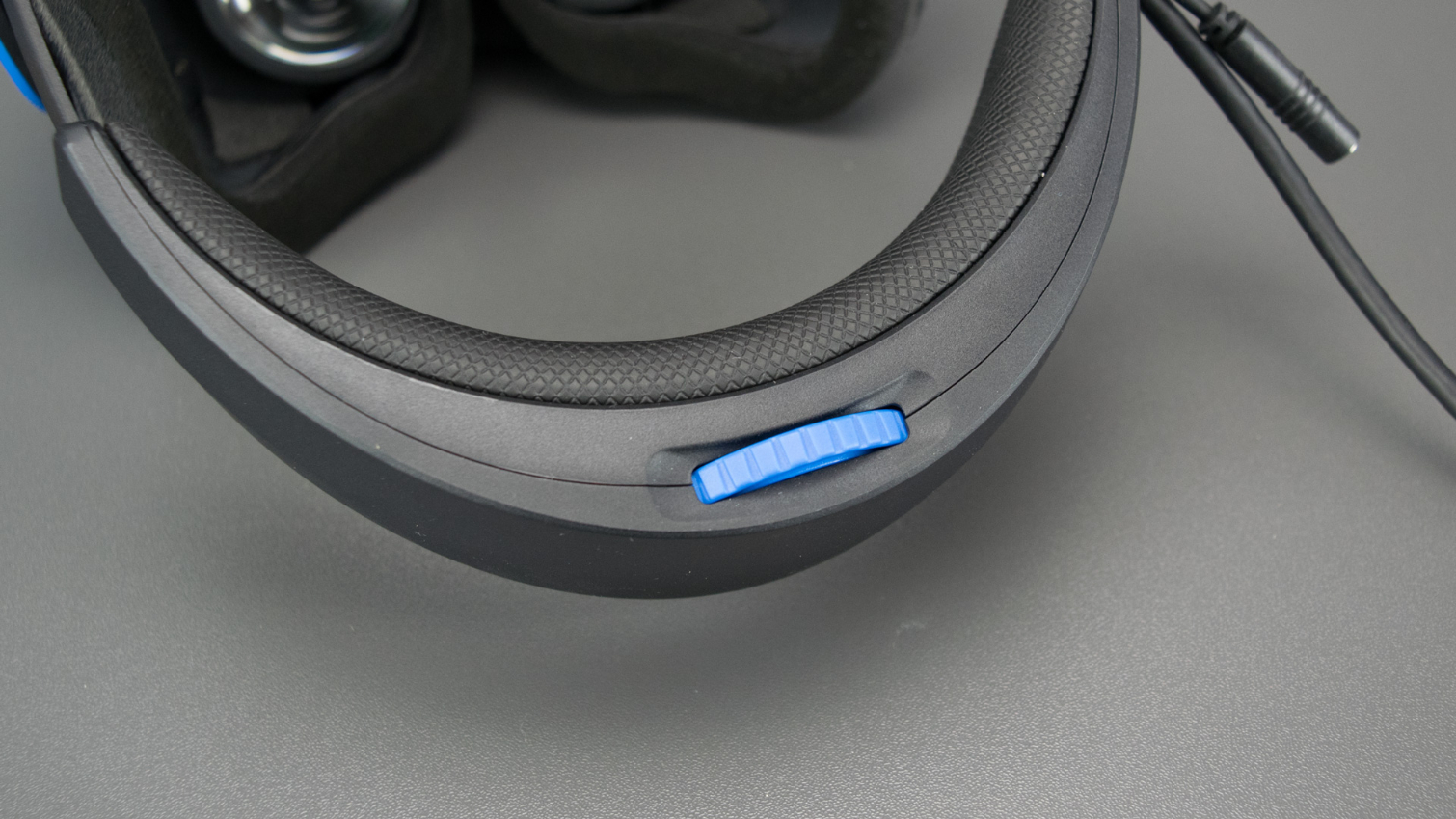
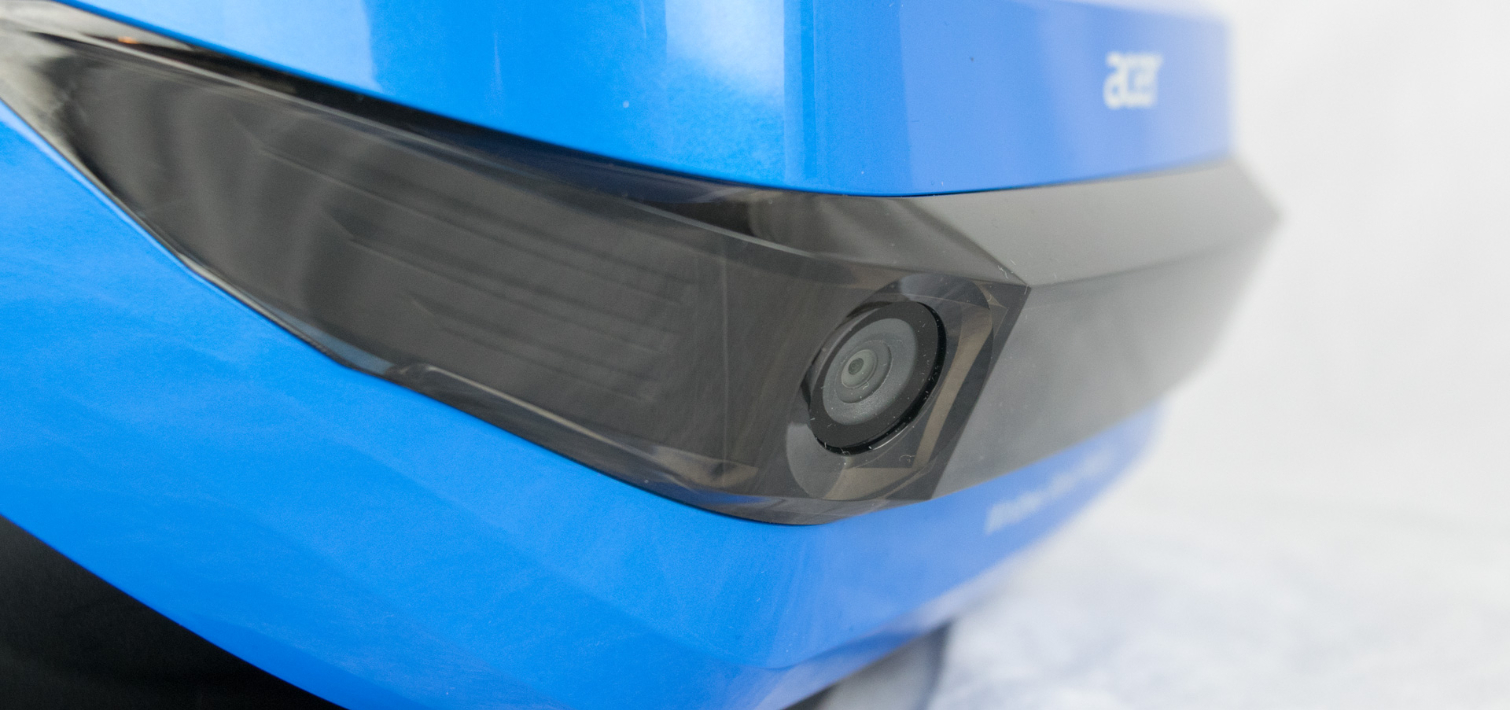

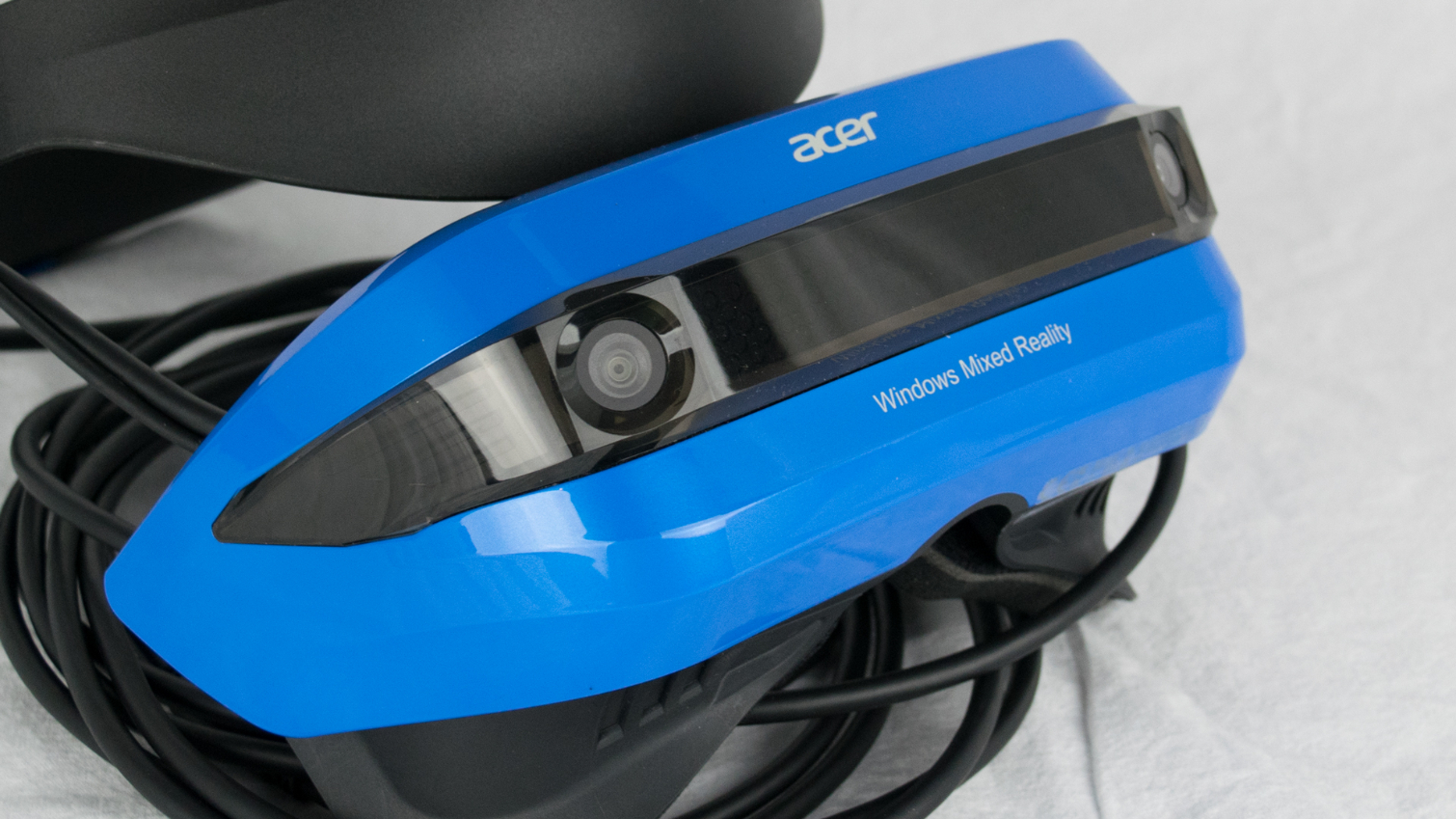

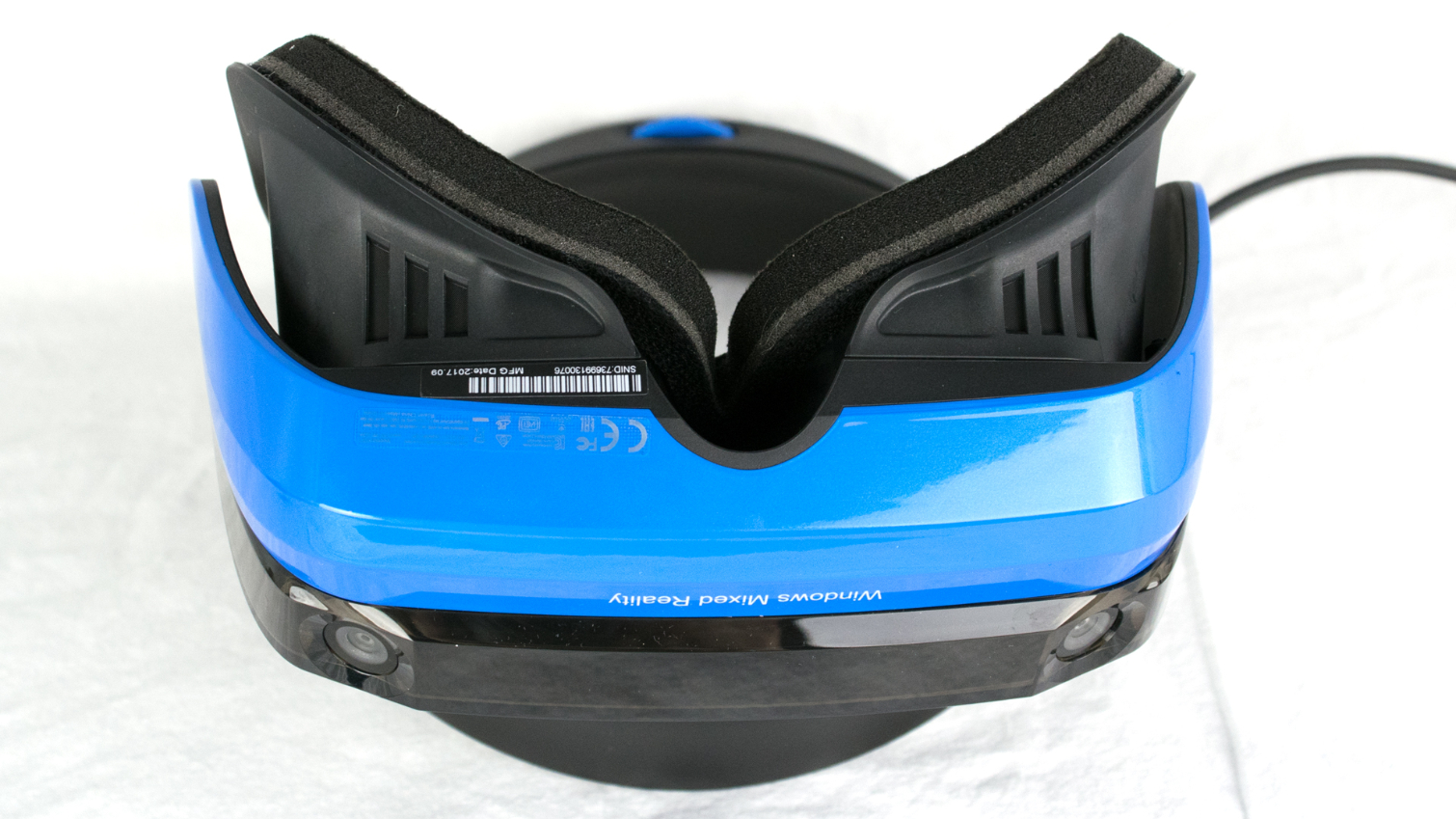


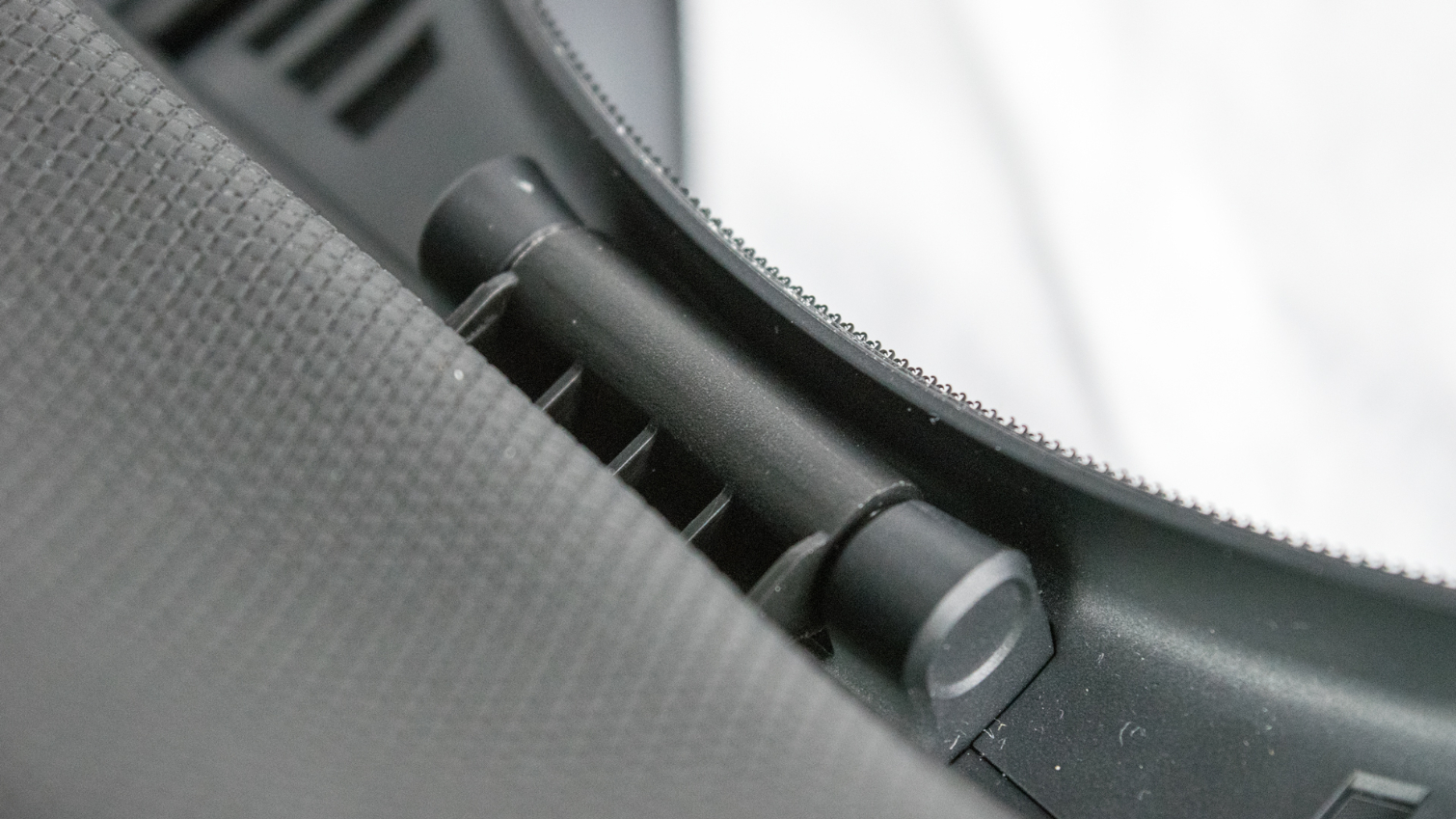
Though the flip-up visor is a nice feature, it does introduce some fresh concerns. For instance, because of the hinge system, Acer’s headset doesn’t put any pressure on your cheeks. That sounds like a good thing. But it could also allow light in if you have slim facial features. The hinge is also a potential failure point. So far, ours is holding up well enough. However, the hinge's actuation feels cheap, like something you'd find on a child's toy. We worry it might eventually fail to hold the headset upright.
Get Tom's Hardware's best news and in-depth reviews, straight to your inbox.
At least Acer’s headset is a featherweight. HTC’s Vive weighs 563 grams with the standard head strap, and a staggering 812 grams with the Deluxe Audio Strap installed. The Rift is somewhat lighter at 470 grams (with its cable detached). And Acer’s headset is lighter still at 446 grams. The Windows Mixed Reality Headset's cable doesn't disconnect, as it does from the Rift and Vive, so our comparison may not be exact. Still, we're confident that Acer’s headset weighs less than a Rift.

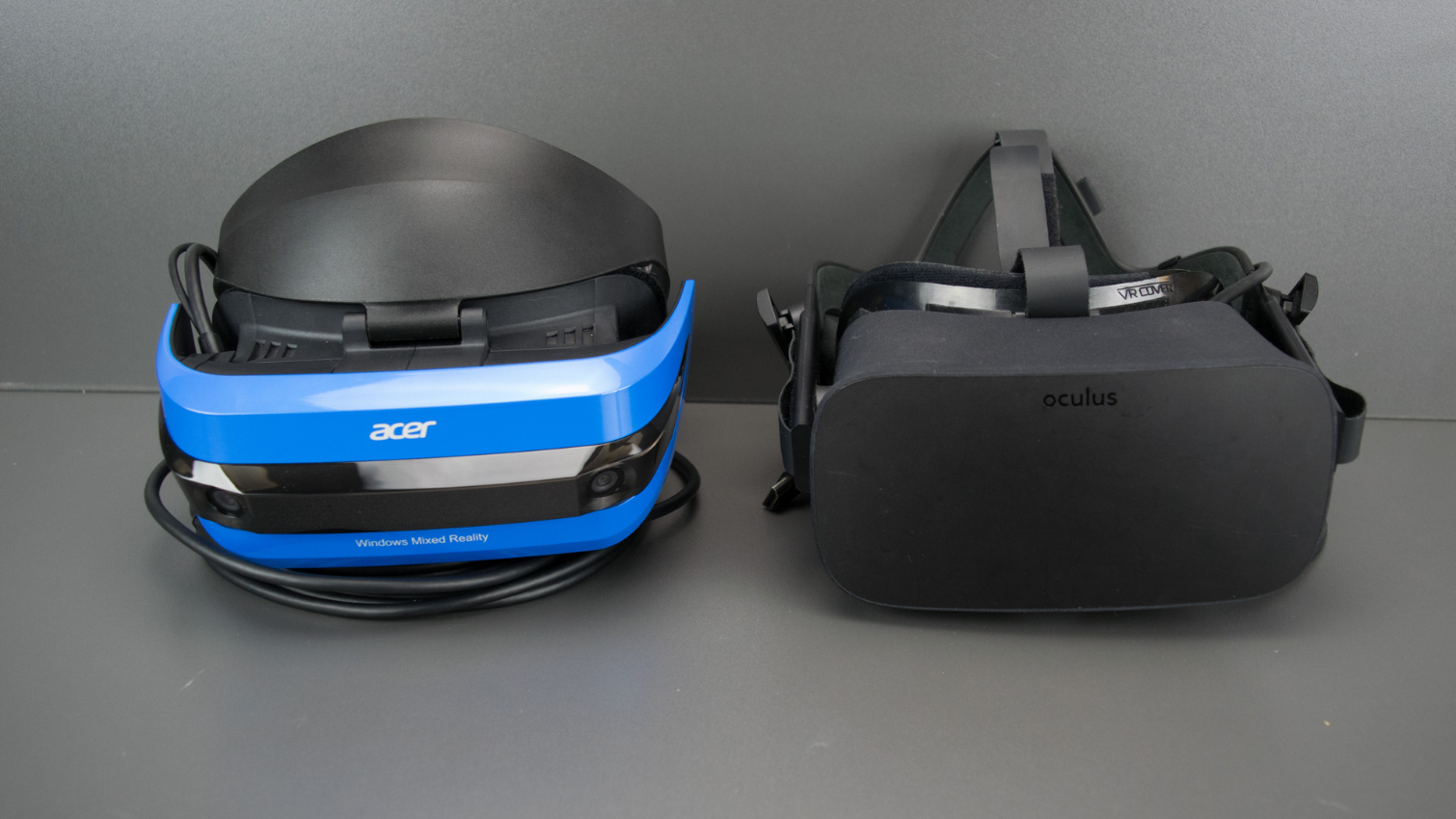
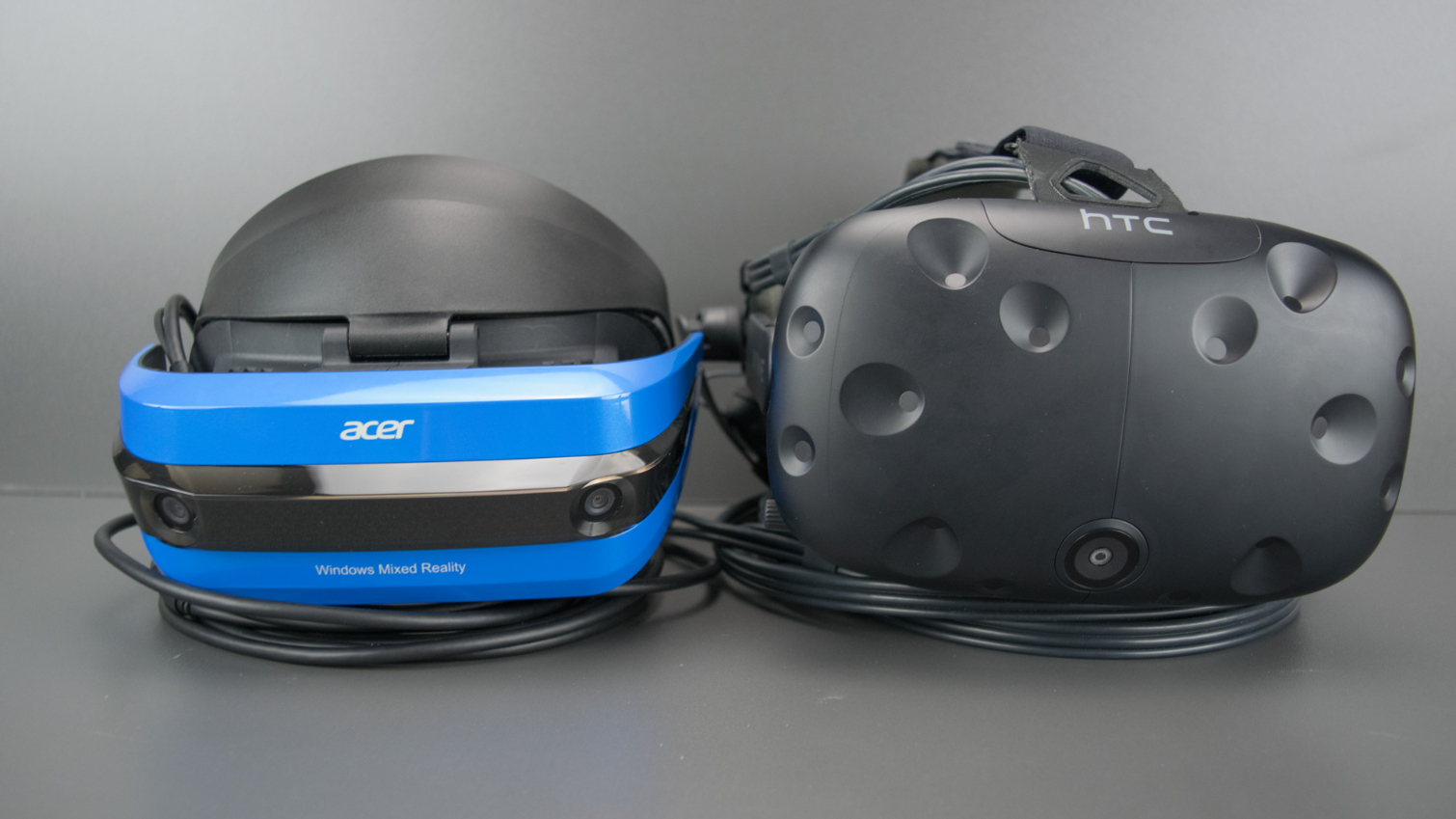
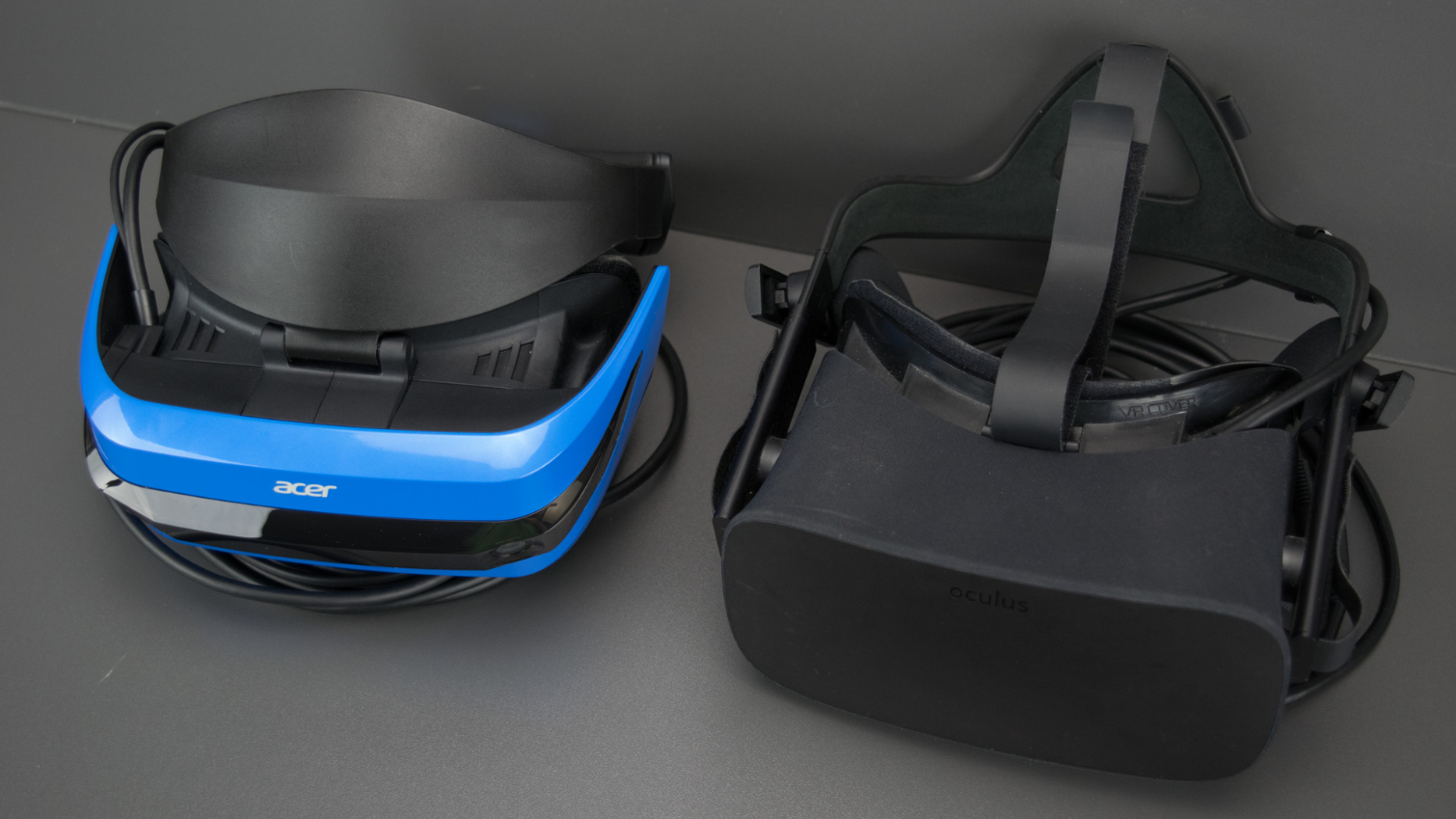
The WMR Headset is also surprisingly compact. Its body measures just 195.8mm wide and 73.9mm tall, whereas Oculus' Rift, which was once the benchmark for compactness, is 171mm wide (216mm with headphones) and 88mm tall. Acer's headset is about as deep as Oculus' Rift, though: it measures 109mm, compared to the Rift’s 102mm depth.
Inside, Acer’s team installs two 2.89” x 2” 1440x1440 LCD panels. Similar to Sony's PSVR, the displays can operate at 60 or 90 Hz to accommodate lower-performance hardware. The headset also includes a proximity sensor that activates the displays when it detects your head.

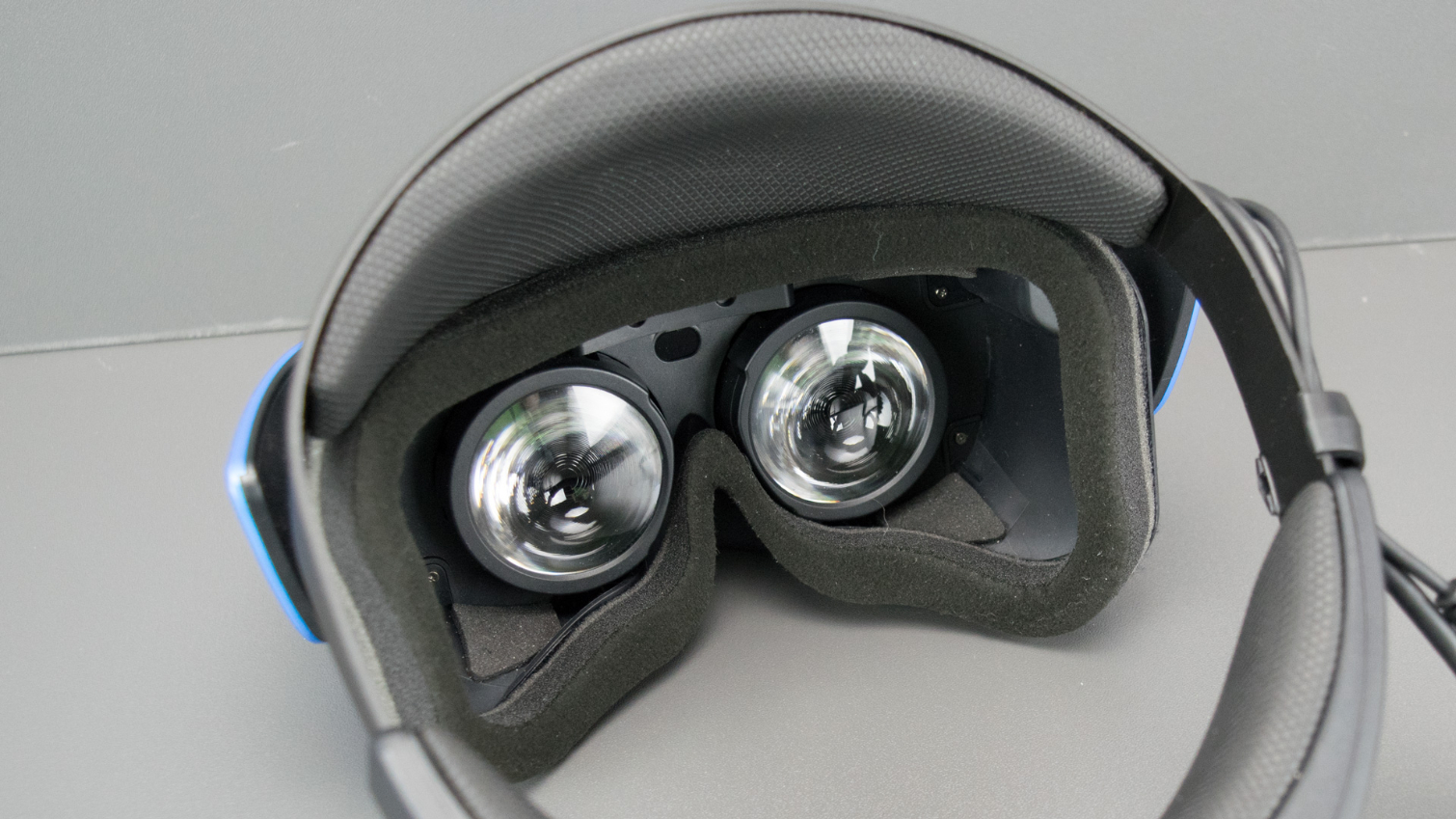




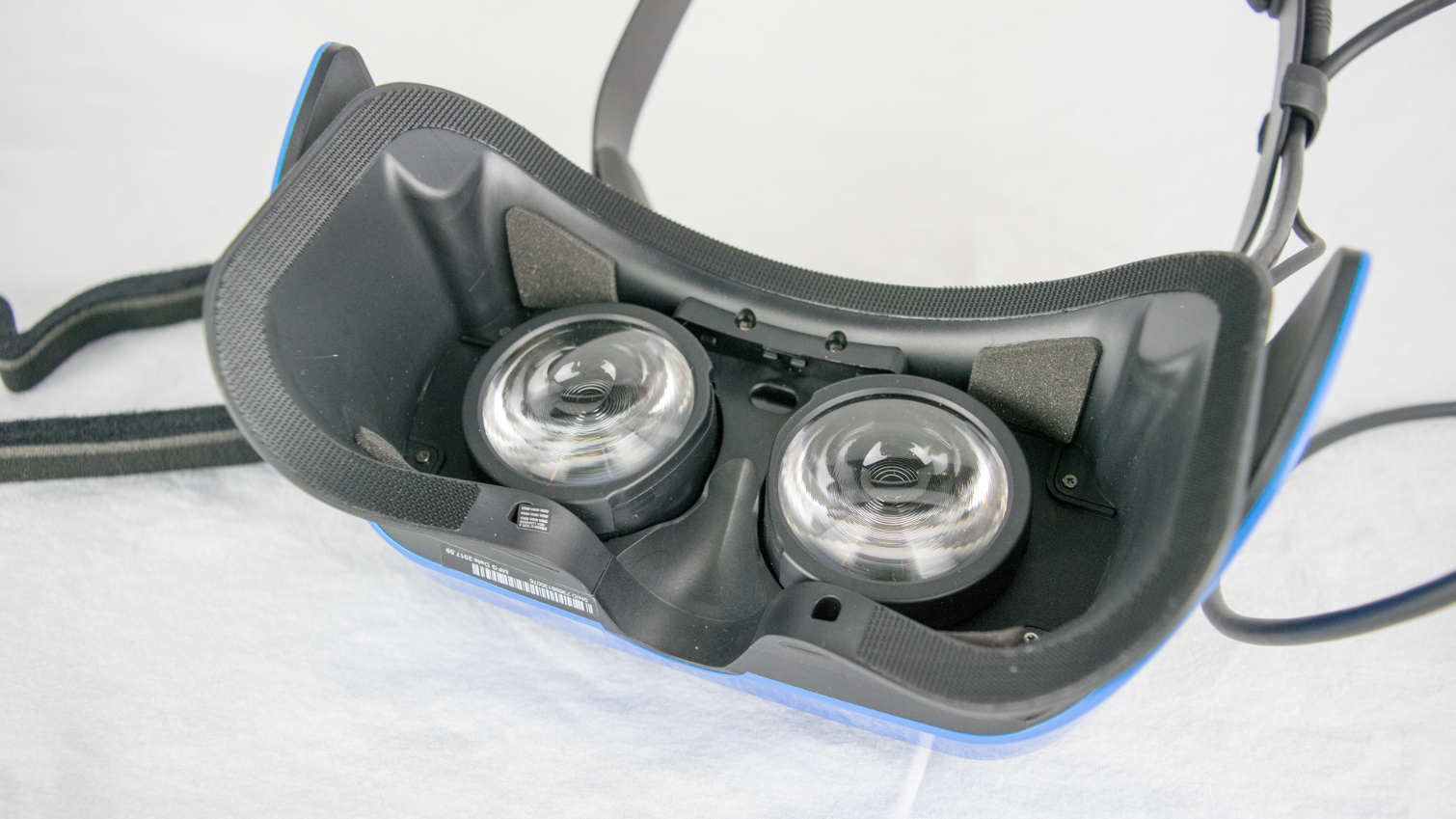

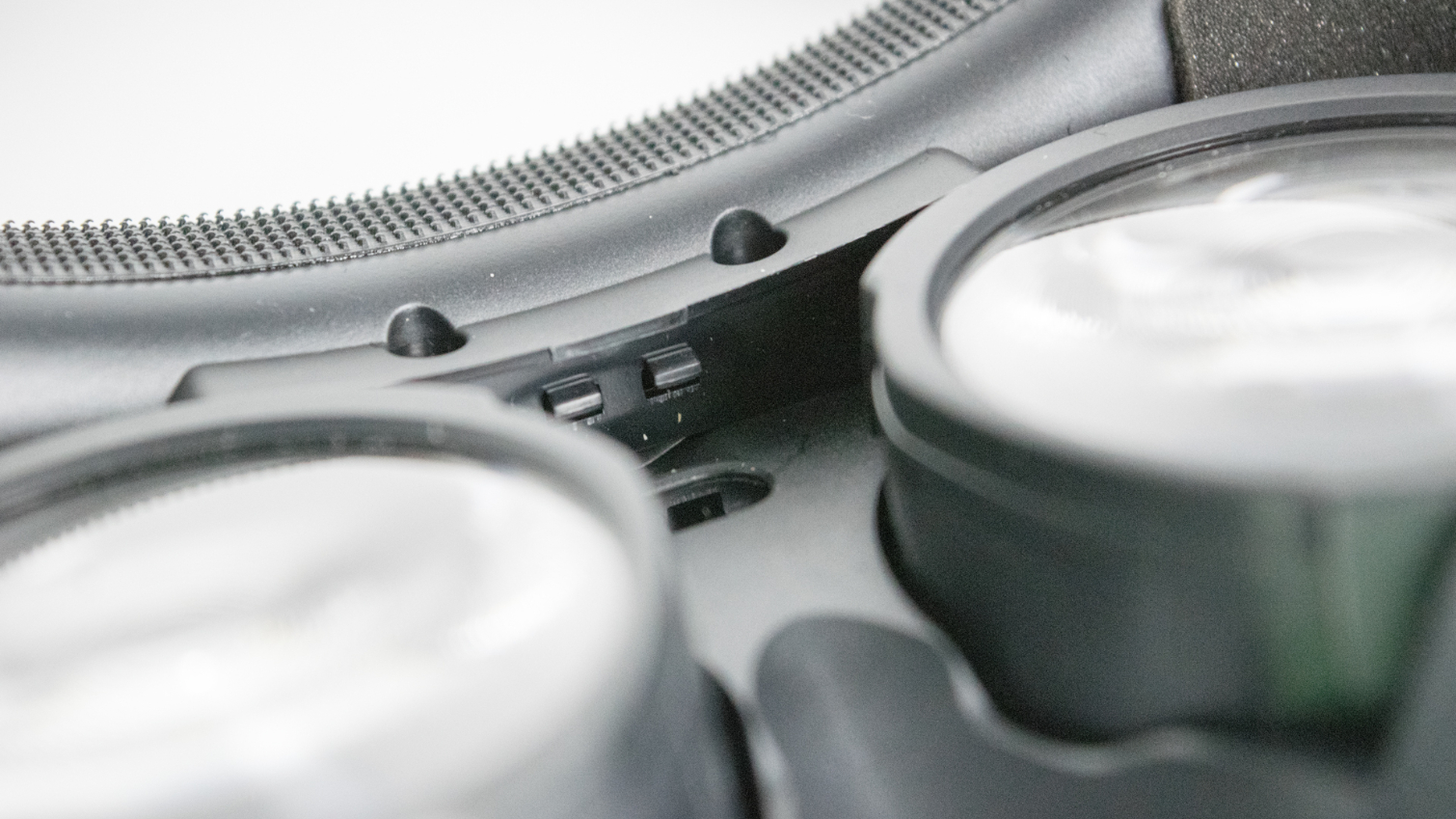
There are two 50mm round Fresnel lenses in the headset, and they're mounted at a fixed 63mm interpupillary distance. Unlike the Rift and Vive, Acer’s WMR Headset doesn’t offer a mechanical IPD adjustment. Acer instead relies on software-based IPD calibration, allowing an 8mm adjustment range.
When the Oculus Rift and HTC Vive came out, screen door effect was a major concern. Acer’s headset offers a higher resolution than either competing HMD. This helps reduce SDE, but doesn't eliminate it. If you look closely enough, you will see gaps between the sub-pixels.
Subjectively, Acer’s headset provides superior image clarity compared to the Rift and Vive. However, its screens still aren't crisp enough to make small text legible.
MORE: Best Virtual Reality Headsets
MORE: All Virtual Reality Content
MORE: Virtual Reality Basics
Current page: The Acer Windows Mixed Reality Headset
Prev Page Microsoft’s Windows Mixed Reality Platform Next Page The Acer Mixed Reality Motion ControllersKevin Carbotte is a contributing writer for Tom's Hardware who primarily covers VR and AR hardware. He has been writing for us for more than four years.
-
steve15180 I realize the article has a certain lead time. However, when the price dropped like a rock on these headsets last week, that changed the whole conclusion of the article. Is itReply
really that difficult in an online publication to update pricing before publishing? Not
the first time I've seen pricing off on these articles. -
jpe1701 I have the HP hmd and I really like it. Are all of the controllers the same for wmr? Mine fit my hand well but as you say they don't inspire much confidence that they will last.Reply -
kcarbotte Reply20647180 said:I realize the article has a certain lead time. However, when the price dropped like a rock on these headsets last week, that changed the whole conclusion of the article. Is it
really that difficult in an online publication to update pricing before publishing? Not
the first time I've seen pricing off on these articles.
The price didn't drop. Amazon is selling them at a huge discount, but if you look at Microsoft's website the price hasn't dropped for any of them.
https://www.microsoft.com/en-us/windows/windows-mixed-reality -
Sakkura Reply20649878 said:20647180 said:I realize the article has a certain lead time. However, when the price dropped like a rock on these headsets last week, that changed the whole conclusion of the article. Is it
really that difficult in an online publication to update pricing before publishing? Not
the first time I've seen pricing off on these articles.
The price didn't drop. Amazon is selling them at a huge discount, but if you look at Microsoft's website the price hasn't dropped for any of them.
https://www.microsoft.com/en-us/windows/windows-mixed-reality
Amazon is a much bigger store than Microsoft. And this is not the first time the price has dropped either. $400 is just a technicality, the practical price for the headset is under $300 (as are the other Windows MR headset, apart from the much better Samsung Odyssey model).
On another note, I think you should have put more emphasis on the lack of integrated audio. You're forced to fiddle with a separate audio headset, with its own extra cord flopping around, and often physically interfering with the VR headset. It's really a major downside compared to the Samsung Odyssey, Oculus Rift, and Vive + deluxe headstrap upgrade. -
cryoburner Reply
Yep, WMR headsets have been commonly available under $300 for a while. Sure, the MSRP might not have officially dropped, but the headsets from Acer, Dell, Lenovo and HP are all available in this price range online. In fact, some have gone on sale for under $250 at times. The Oculus Rift getting permanently discounted to $400 has made it necessary for these headsets on a less established platform to sell for less, particularly since most of them don't do much to be distinct from one another. I'm sure the high price of graphics cards hasn't helped either. It's undoubtedly hurting sales of the Rift and Vive too, but the higher resolution of these HMDs means even higher-end hardware is required for gaming, which is undoubtedly still their main draw.20650111 said:And this is not the first time the price has dropped either. $400 is just a technicality, the practical price for the headset is under $300 (as are the other Windows MR headset, apart from the much better Samsung Odyssey model).
It might be worth at least mentioning in the conclusion that it may be possible to find the headsets for well under retail. That could change of course, if adoption of the platform were to really pick up, but I think the main thing selling them currently is their lower price. -
SWKerr This is a pretty weak review especially considering that it is months after release. The cost of the actual Windows MR headsets has been between $200-300 for more than a month. Not mentioning this fact makes the conclusion misleading at best.Reply
I find it odd that you did not delve into the fact the Windows store has very few games and that you really need to use the Steam store for gaming. (Which is what 95% of people want these things for.) It would have been very helpful had you talked about this and mention some potential game compatibility limitations. Personally I have found the MR headsets work very well for every game I have tried but since they are not written for MR you are often looking at a Vive controller and guessing about how controls are mapped.
Having used all available VR headsets at this point, I actually like the Windows MR the best. It is about the ease of setup. You do not end up with a bunch of wires running everywhere for the tracking and unless you have a large dedicated room for VR this is a big deal. The tracking may not be quite as good as a perfect setup of the competitors but it is functionally really good.
Video cards: VR reviews should mention the current state of decent video cards at this time. These things will be very disappointing on anything less than a GTX 1060 6GB or RX 580 8GB. But...getting you hands on one is unlikely at any reasonable price point.
Controllers: The reference controller could be better ergonomically but they are not uncomfortable to use for long periods of time. (Samsung actually made a better version for their headset combo.) What I find nice about the controller is that becase they have both the touch pad and stick inputs you can generally play both Vive and Rift games. The controllers are interchangeable across all the headsets and I expect someone to come out with a better aftermarket controller at some point.
Really the Windows MR headsets are a good entry point for VR. They would not be good value at $399 but they are nowhere close to that price point. -
kcarbotte Reply20651505 said:This is a pretty weak review especially considering that it is months after release. The cost of the actual Windows MR headsets has been between $200-300 for more than a month. Not mentioning this fact makes the conclusion misleading at best.
I find it odd that you did not delve into the fact the Windows store has very few games and that you really need to use the Steam store for gaming. (Which is what 95% of people want these things for.) It would have been very helpful had you talked about this and mention some potential game compatibility limitations. Personally I have found the MR headsets work very well for every game I have tried but since they are not written for MR you are often looking at a Vive controller and guessing about how controls are mapped.
Having used all available VR headsets at this point, I actually like the Windows MR the best. It is about the ease of setup. You do not end up with a bunch of wires running everywhere for the tracking and unless you have a large dedicated room for VR this is a big deal. The tracking may not be quite as good as a perfect setup of the competitors but it is functionally really good.
Video cards: VR reviews should mention the current state of decent video cards at this time. These things will be very disappointing on anything less than a GTX 1060 6GB or RX 580 8GB. But...getting you hands on one is unlikely at any reasonable price point.
Controllers: The reference controller could be better ergonomically but they are not uncomfortable to use for long periods of time. (Samsung actually made a better version for their headset combo.) What I find nice about the controller is that becase they have both the touch pad and stick inputs you can generally play both Vive and Rift games. The controllers are interchangeable across all the headsets and I expect someone to come out with a better aftermarket controller at some point.
Really the Windows MR headsets are a good entry point for VR. They would not be good value at $399 but they are nowhere close to that price point.
"This is a pretty weak review especially considering that it is months after release."
I'm sorry you feel that way. I'm not going to get into the politics behind the delay in publishing, but the review was written before Christmas.
"The cost of the actual Windows MR headsets has been between $200-300 for more than a month."
Amazon is the only place that I've seen the headset discounted. Acer did no drop the price, and Microsoft didn't step in to subsidize the cost.
When the price comes down at all retailers, we'll update the review. Until then, I stand by what I wrote. Acer wants $400 for the package, and unless you buy from Amazon, that's what you'll pay.
"I find it odd that you did not delve into the fact the Windows store has very few games and that you really need to use the Steam store for gaming."
Page 8 discusses that briefly. What would you suggest should be added?
"Video cards: VR reviews should mention the current state of decent video cards at this time."
We have written a lot about the current state of the graphics card market. I don't believe that has any place in a VR review because it's a temporary state of the market. Yes, it sucks to buy into VR right now because of GPU prices, but that doesn't affect the merit of the headset itself, nor the platform it runs on.
"Controllers: The reference controller could be better ergonomically but they are not uncomfortable to use for long periods of time."
Maybe for you, but my hands cramped up within 10 minutes of using them, and several people who tried it had similar complaints. Not everyone will have that problem, but the controllers were not designed in such a way that most people won't have problems.
As for the Samsung controllers-- I haven't received a sample from Samsung yet, so I can't say much about that. I used Samsung's controllers for about 10 minutes and they are much better ergonomically. -
Heliosurge Reguarding no integrated audio; have you considered one of the many wireless headset options? Many bluetooth ones also require no headband.Reply
Steam? Did you miss the "Early Access support" support in steam. Or the fact that if you are a steam user; we would see a new headset icon that represents WMR.
Reviews usually go with suggested retail price not a retailer's sale. Now i do agree that a small addition mentioning that Amazon is having a sale on them.
But all in all a great review! -
Heliosurge KevinReply
While Intel's igpu peeformane was not good are you able to run some tests on Amd's Apus? Fm2+ & Ryzen Apus would be interesting if they yeild better results.
